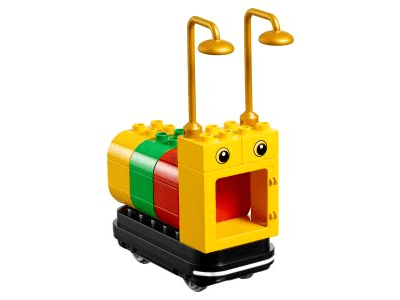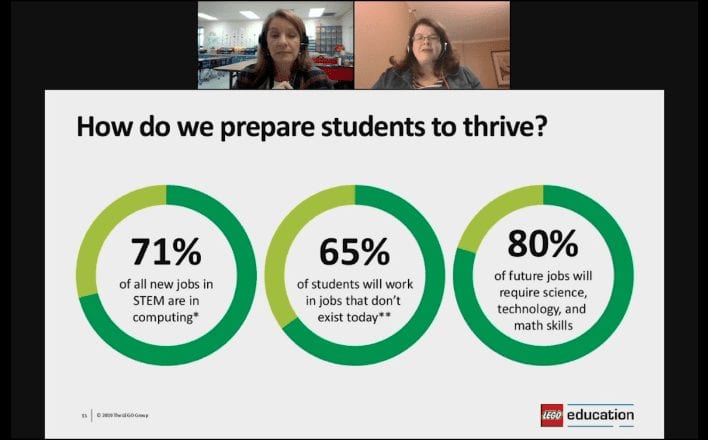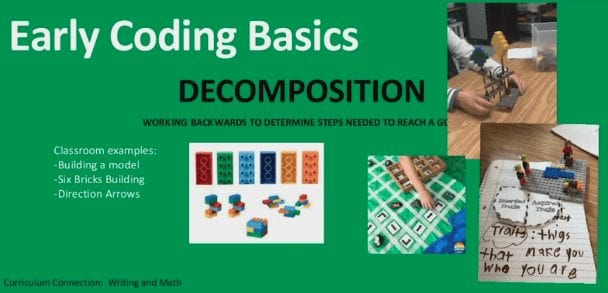Building Coding Skills Through Playful Learning
Teaching computer coding skills and concepts in the primary grades may sound like a challenge, but now there are hands-on activities and age-appropriate software that engage young students in this type of learning. And, starting the learning process in grades K-2 can build students’ confidence and reduce the challenges they face later when working on coding projects in the upper grades.
During a recent edWebinar, ways to develop early coding skills through playful learning were presented by Leanna Prater, Ed.D., a Solution Engineer at LEGO Education, and Jennifer Rodabaugh, a classroom teacher and developer of Science, Technology, Engineering, Arts and Math (STEAM) projects.
Noting that 80% of future jobs will require STEAM skills, Dr. Prater pointed out that workers will also need problem-solving and critical-thinking skills, as well as the ability to collaborate and persevere, all of which can be integrated into inquiry projects that include hands-on activities. Dr. Prater also identified key characteristics of playful learning projects, which include the projects being meaningful, engaging, iterative, and socially interactive for young students
Rodabaugh then explained the types of projects that have successfully developed early coding skills in her classrooms and STEAM labs, including the use of LEGO bricks and software.
Building Coding Skills
Decomposition, or learning to work backwards to determine the steps needed to reach a goal, was the first key skill Rodabaugh discussed. This skill can be developed by having K-2 students look at a model—or design one of their own—and then figure out the types of materials needed in order for what they build to resemble the original model. She recommends limiting the number and type of materials with young students, to keep the project from becoming confusing or overwhelming.
To prepare young students to develop algorithms, the students can practice identifying the steps needed to reach a desired outcome, such as the building of a structure. Then they can also take a structure apart and explain to a partner how to rebuild it, so the students develop the expressive and receptive language needed to succeed when working on this type of project.
The debugging process, trying to find mistakes that prevent computer code from doing what was intended, can be taught by setting up puzzles where one piece is out of place, and then having the students find it and put it in the right place. Rodabaugh noted that presenting this type of activity as something the teacher has done wrong can be especially engaging, because “kids love correcting their teacher.”
A favorite activity for Rodabaugh’s students has been to use colored blocks to “program” what the kids do during movement breaks. For example, the teacher might establish that a green block stands for raising hands, a yellow block stands for touching toes, and a red block means freeze. Then the blocks can be arranged in different sequences, determining what that the students do when, while also providing them with opportunities for kinesthetic learning.
Teaching Early Coding
Rodabaugh has found that with this type of education she has become more of a facilitator, rather than a provider of direct instruction, because she often needs to step back and let the children learn by doing by using a trial-and-error process. She also becomes a real-world model for the students when she doesn’t know the answer to a question or a solution to a problem, in that she then demonstrates how to find out what the answer or solution should be.
Guiding students’ learning in this way also requires a focus on the application of knowledge, rather than just achieving an outcome. This, in turn, means that the evaluation of projects should include rubrics based on the processes students develop and use, not just the end result.
Rodabaugh has found that teaching and learning early coding skills through playful learning enables different types of students to work together and succeed, because the curriculum includes hands-on activities as well as pencil-and-paper ones. And this approach is what Dr. Prater called a “low-floor, high-ceiling” process, meaning that all the students can start together and then take their projects to new heights in their own ways.
This edWeb broadcast was sponsored by LEGO® Education.
This article was modified and published by eSchool News.
About the Presenter
Dr. Leanna Prater serves as a solution engineer at LEGO® Education. In this role, she helps provide content area expertise, thought leadership, and strategic solutions to support activities specific to the instructional goals and program needs of LEGO Education customers. Prior to joining LEGO® Education, she taught in the elementary grades and served as a district technology resource teacher for Fayette County Public Schools in Lexington, KY. She currently serves as an adjunct professor at Georgetown College where she teaches a graduate class on coding for teachers. Leanna holds a Bachelor of Arts in elementary education from the University of Charleston, a Master of Arts in education/gifted education from Georgetown College, and a Doctorate of Education in curriculum and administration with a focus on instructional systems design from the University of Kentucky. As an advocate for STEM and computer science for all, she supports classroom teachers and students in areas such as robotics and creative computing and helps organize Scratch Educator meetups in her area.
About the Host
Jennifer Rodabaugh has been teaching in various capacities for over 19 years. She has an undergraduate degree from Texas A&M University – Corpus Christi in elementary and special education. She earned her Master’s degree from the University of Arizona. She has been a classroom teacher for all grades from Kindergarten-third grade. 7 years ago, she left the classroom to turn her school’s science special area lab into a STEAM (Science, Technology, Engineering, Art and Math) lab. Last year, she moved to a new campus to turn her second elementary lab into a STEAM lab. Jennifer has been LEGO® Education Master Educator for the past 2 years.
Join the Community
PreK-3 Digital Learning is a free professional learning community on edWeb.net that hosts edWebinars, ignites edtech talks, and promotes wide-ranging discussions on using digital tools to support preK through grade three classrooms.






Comments are closed.